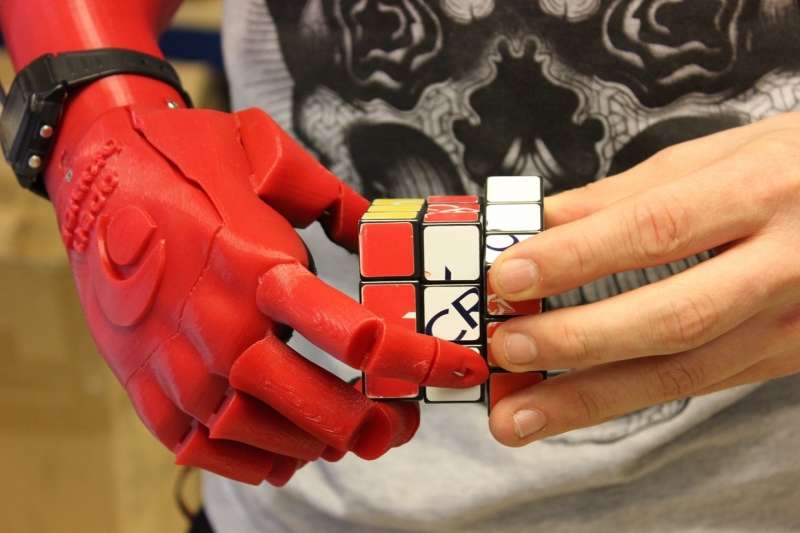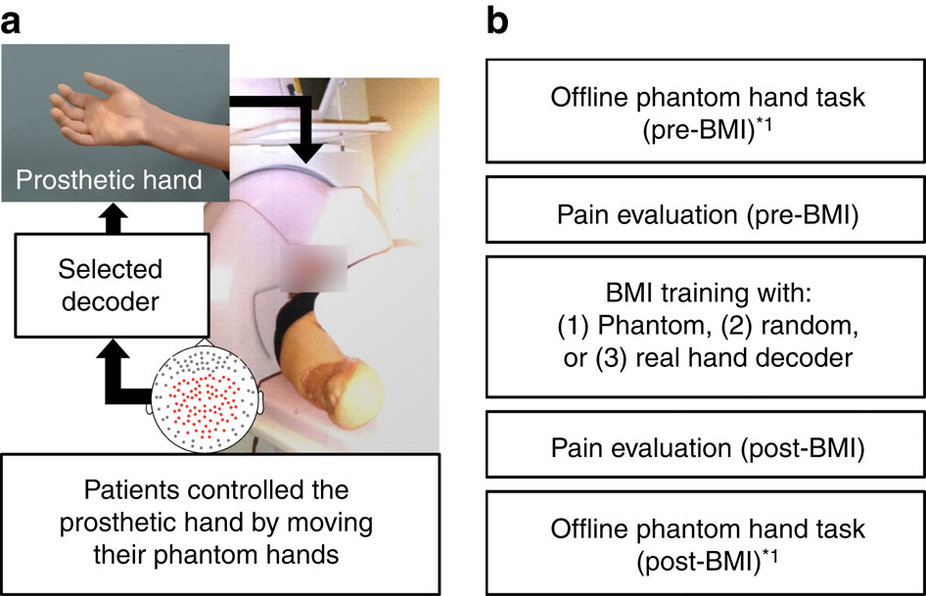Researchers have found the cause and possible treatment of phantom pains.

Researchers identified the cause of chronic, and currently incurable, pain in patients after amputation of a limb and severe nerve damage. A possible treatment option for this problem lies in using the capabilities of artificial intelligence.
According to a popular, but rather controversial theory, phantom pain after loss of a limb is the result of inadequate reorganization of the peripheral and central structures of the nervous system, which together form the sensory system. Such a system in the human body is responsible for the perception of various signals. It consists of receptors, nerve pathways and the part of the brain that is responsible for perception. We all know about the most famous sensory systems. These include touch, smell, sight, hearing and taste, and the vestibular apparatus. When a discrepancy is formed between the movement and the perception of this movement, a phantom pain occurs. Simply put, the brain "sends" a signal to an amputated limb and does not receive recoil, muscle response.
')
Rehabilitation treatments such as tactile stimuli discrimination exercises, myoelectric prostheses , limb replantation, and mirror therapy reduce pain. However, recent evidence has led researchers to question the controversial sensory-motor model of restructuring, especially from the point of view of motor phantom pain.
A group of researchers from the University of Osaka (Japan), together with Cambridge scientists, used a neurocomputer interface to prepare a group of 10 people for managing a robotic arm.
A standard neurocomputer interface usually uses the so-called “ biofeedback ” method. With it, the brain and the computer can interact in the opposite direction. Scientists have used the interface to decipher the neural activity of the intellectual actions necessary for the patient to move the phantom of the arm. Then they transformed the decoded phantom movement of the hand and sent a signal from it "inside" the neuroprosthesis using artificial intelligence methods.
In the image below, you can see a diagram describing the learning process. Patients had to control the prosthetic arm by moving the “phantom” arm in each experiment. After that, the researchers assessed their level of pain. Then the patients trained for 10 minutes with a neurocomputer interface.

“Even though the hands are gone, people with phantom pain still feel that there is a hand. This is mainly manifested in a painful sensation, such as a burning sensation or hypersensitivity. Conventional painkillers in such a situation are ineffective - said study co-author Ben Seymour, a neuroscientist at the Department of Engineering at the University of Cambridge. “We wanted to come up with technology-based treatment as opposed to drug therapy.”
Scientists have found that in patients with chronic pain associated with amputation or nerve damage, the wires are “crossed” in the part of the brain that is responsible for sensation and movement. By correcting this violation, the pain can be cured. The results of the study can be used to treat other chronic pain. For example, pain due to arthritis.
The part of the brain that is responsible for motor activity works fine, but it does not receive sensory feedback. When a patient from the group tried to control the prosthesis, linking the movement of the missing hand with the “damaged” part of the brain, it only increased the pain. Then the researchers changed their tactics and decided to train the "wrong" part. The brain of the patient, who has no left hand, was taught to move the prosthesis by decoding the movement associated with his right hand. For patients with amputation of the right hand, the reverse mechanism. When the subjects were trained by such an “illogical” technique, they found that their pain was significantly reduced. When patients learned to control their hand in this way, they took advantage of the plasticity of the sensory system — the ability of the brain to restructure and learn new things.
Although the results are promising, Seymour warns that the effect is temporary. In order to study it well and bring it to the ideal, it requires expensive equipment. Nevertheless, the scientist believes that treatment based on their technique will become available within 5-10 years. Ideally, they want to create equipment that patients could use at home or combine with physiotherapy. Scientists are confident that the combination of artificial intelligence with new technologies is a promising area for the treatment of pain, as well as an important area of research for further cooperation between Japan and the UK.
Every year in the UK alone, approximately 5,000 amputation operations are performed. Most often, the need for such an operation occurs in patients with diabetes of the first or second type. In most cases, people who have decided to have an amputation or have suffered serious nerve damage that led to a loss of sensation in their hands continue to feel the existence of the affected side, as if it were in place - from 50-80% of these patients suffer from chronic phantom pain.
Source: https://habr.com/ru/post/398755/
All Articles